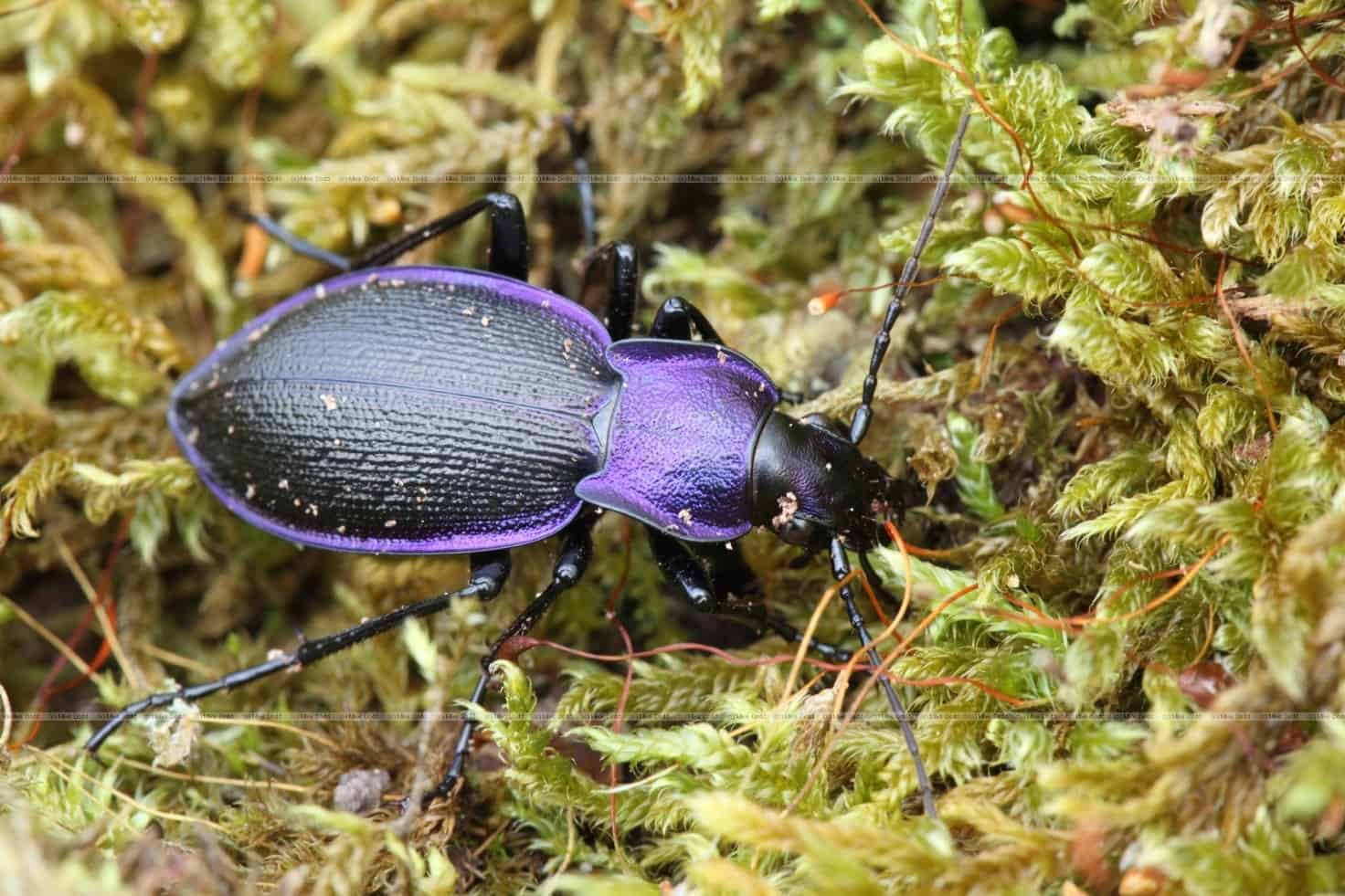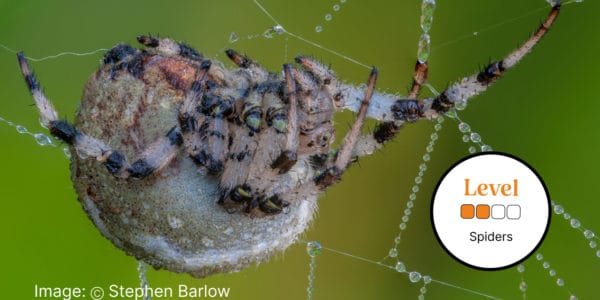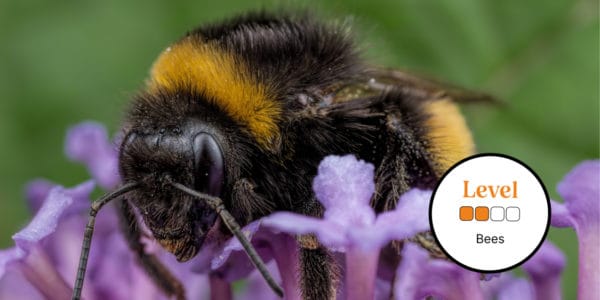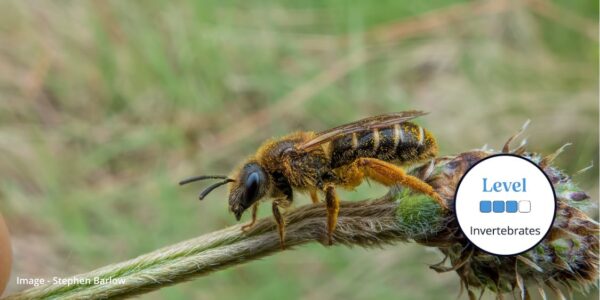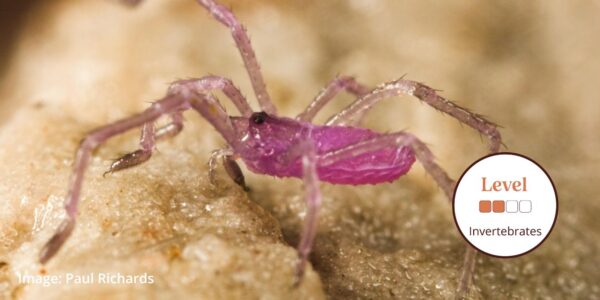A course designed to develop higher level skills in the interpretation of invertebrate survey data.
This course allows learners to gain an understanding of methods for site assessment using invertebrates. The role of sampling protocols will be explored through fieldwork, and a team approach will be taken to gather a set of accurate species records for analysis and interpretation. A variety of approaches to site and habitat assessment will be explored, to demonstrate the strengths and weaknesses of each technique. The relevance of population size, indicator species, habitat fidelity and species assemblages in assessing an invertebrate fauna will be discussed.
Your course takes place on a 12-hectare estate, surrounded by a rich range of habitats, including the River Severn and semi-ancient woodland, set in the heart of Shropshire with views disappearing into Wales.
PLEASE NOTE the course fee is for tuition only. If you would like to book accommodation and meals, including packed lunches, at Preston Montford please email [email protected] Please book early to ensure availability of accommodation.
Who Should Attend?
Natural history enthusiasts, students, rangers, ecologists, environmental professionals. This intermediate level course is open to anyone with some knowledge of the subject.
Knowledge Level – Intermediate. Level descriptors can be found on the following webpage: Framework and Course Level Descriptors
What will be covered during this course?
The course will be delivered through a combination of seminars, laboratory identification sessions and practical field work.
- Invertebrate survey and assessment methods i.e. butterfly monitoring scheme
- The use of invertebrate indicators for surveying, surveillance and monitoring.
- Rarity and threat to determine the conservation of invertebrate species
- Surveying techniques and critique.
- Awareness of published resources for the identification of invertebrates including handbooks, cribs and general guides.
By the end of the course, you will be able to:
- Design, justify and carry out a survey or sampling strategy for the assessment of a site for invertebrates, and present the results appropriately
- Critically evaluate the use of invertebrate indicator species in survey and monitoring including rarity and threat to determine conservation status
Accreditation
This is one of a series of courses (Units) run jointly with Manchester Metropolitan University contributing to the MSc Biological Recording and Ecological Monitoring and the Postgraduate Certificate in Biological Recording. MMU students complete assessed work after the course. For further details about Manchester Metropolitan University degree programmes please contact:
Department of Natural Sciences, Manchester Metropolitan University, (Shrewsbury Office). Email: [email protected]
- See the ‘Example Timetable’ and ‘What’s Included’ sections below for more information about this course.
- Upon booking you will need to provide individual details of all attendees
- Please email [email protected] if you have any questions.
Assessment
For Manchester Metropolitan University students, the Unit will be assessed through, for example, identification tests, survey reports, field journals, production of keys, essays or other forms of assessment. In course tests are optional and less formal for participants who are not MMU students.
MMU students will be required to complete a report:
You will be expected to design, justify and carry out an appropriate survey or sampling stategy for the assessment of a site for invertebrates. You will need to justify the methods chosen with reference to appropriate literature, logistical and practical constraints, and present the results appropriately. You will be expected to carry out some data analysis on the results, and present these in the most appropriate way. This report will consistute approximately 2000 words.
Tutor: Peter Boardman
Pete first got into flies after volunteering with Liverpool Museum’s entomological department in the early 1990s, with support from Tom Mawdsley and Richard Underwood. He ‘discovered’ craneflies when county moth recorder for Shropshire and chose them as a dissertation subject for his MSc in the mid 2000s. Following this he committed to the group and immediately worked on a Shropshire distribution atlas (2007) and a second improved version with keys in 2016.
In 2018 he was awarded a Churchill Fellowship which enabled him to spend a month at the Smithsonian Institution collections in Washington DC studying the Charles Alexander collection. This enabled him to later name 23 new species to science from Cameroon.
He currently is national cranefly recorder for the Cranefly Recording Scheme supporting John Kramer and Alan Stubbs.
Book with Confidence
We understand the difficulties of making plans in the current situation when guidelines continue to change, and insurance conditions are being tightened. In response, we will continue to offer additional flexibility. Find out more here
Example Timetable
Example Timetable
This timetable is subject to change but should give an outline of what to expect.
If you have booked accommodation and meals with the centre your bedroom will be ready from 3.00 pm onwards on the day of arrival and we ask that you vacate by 9.30 am on the morning of departure.
If numbers are sufficient a station pick up will be arranged at 5.30 pm from Shrewsbury Station.
The evening meal is at 6.30 pm (not included in the course fee - please book separately).
The course starts after dinner with a classroom session 7.30 pm - 9.00 pm
The course ends at 4.00 pm on the final day.
Time will be made available for eating packed lunches during the day (not included in the course fee - please book separately).
Friday
Introductions, Site surveys for invertebrates, Assignment details.
Saturday
Field work, invertebrate assemblages in detail. An introduction to Pantheon.
Sunday
Field work, laboratory workshop – specimen identification. Pantheon using existing data sets. Data upload to iRecord.
Monday
Field work, Laboratory workshop / Pantheon workshop. Report creation.
What's Included
What’s included?
- Classroom learning covering the theory of the subject
- Field excursions to apply new knowledge
- Expert tuition for which the FSC is renowned
- Clear objectives and progression
You can rest assured that the absolute best content from an expert in environmental education will be provided. In choosing an FSC course, you will be joining thousands of people who learn with us each year.
PLEASE NOTE the course fee is for tuition and refreshments only. If you would like to book accommodation and meals, including packed lunches, at FSC Preston Montford please email [email protected] Please book early to ensure availability of accommodation.
Before You Attend
There will be a member of staff with first aid training and access to a first aid kit on site. If you have special medical or access requirements, please let us know as soon as possible so we can make any necessary adjustments.
What to Bring
- A hand lens, preferably x10 and/or x20.
- Warm waterproof clothing and footwear.
- A field notebook and pencil.
- Your own laptop (if available, if not please contact the Centre) – Essential!
- A copy (electronic or hard copy) of the core text by Drake et al. (see Background Reading section)
- A sandwich box, flask and/or water bottle and a bag to carry your kit.
- Collecting equipment, specimen preparation materials and some taxonomic identification literature will be available to borrow but you may wish to bring your own if you already own them.
Recommended Reading
The following resources are recommended. The first can be downloaded from Natural England’s website and is the core text for the course. You should bring your own copy to the course if at all possible.
- Drake, C.M., Lott, D.A, Alexander, K.N.A. and Webb, J.R. (2007) Surveying terrestrial and freshwater invertebrates for conservation evaluation. Natural England Research Report NERR005. Sheffield: Natural England.
- Hill, D., Fasham, M., Tucker, G., Shewry, M. and Shaw, P. (eds.) (2005) Handbook of biodiversity methods. Survey, evaluation and monitoring. Cambridge: Cambridge University Press.
- Webb, J.R. and Lott, D.A. (2006). The development of ISIS: a habitat-based assemblage classification system for assessing conservation interest in England. Journal of Insect Conservation, 10, 79-188.
Sorry this course has ended

